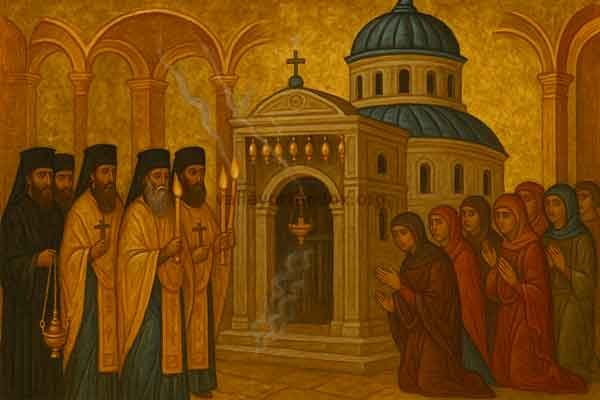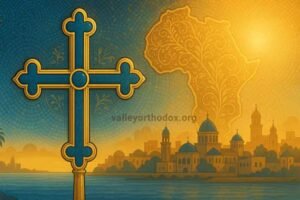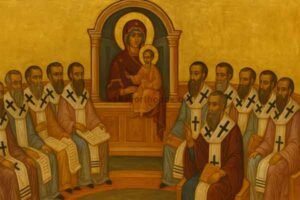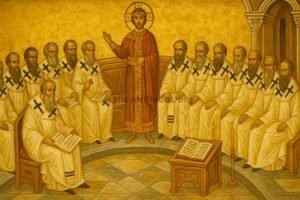Apostolic Roots and Early Witness
Jerusalem’s Church begins with the apostles, the first Christian community, and the Paschal events. From the mother church of Acts to late antique basilicas over holy sites, Jerusalem paired local memory with universal mission: proclaiming Christ and receiving pilgrims who sought to pray where He lived, died, and rose.
Guardians of the Holy Places
The Holy Sepulchre and Major Shrines
At the heart stands the Church of the Holy Sepulchre, uniting Golgotha and the Tomb of Christ. Orthodox clergy share custodial responsibilities with other historic communities. Additional sites—Gethsemane, Bethlehem, Ascension, and more—form a network of liturgical stations that structure the Church’s year and the pilgrim’s path.
Brotherhood of the Holy Sepulchre
The Brotherhood is the monastic body serving the Patriarchate’s liturgical, pastoral, and custodial work at the shrines. Monks and clergy maintain services, welcome pilgrims, and safeguard access and order, embodying a vocation of prayerful stewardship.
Liturgy and Pilgrimage
Worship at the Source
The Patriarchate celebrates the Byzantine rite, often with distinctive local usages shaped by the holy places. The liturgical calendar intersects with processions through the shrines, especially during Holy Week and the Feast of Pascha. Pilgrims experience Scripture through space and ritual—catechesis by place as well as word.
Languages and Communities
Greek, Arabic, and other languages are used pastorally. Parishes in the Holy Land serve local faithful while monasteries maintain the daily cycle of prayer in churches built over the Gospel sites.
Trials and Continuity
Jerusalem’s Church has endured invasions, fires, earthquakes, and shifting regimes. Through these, the Patriarchate maintained liturgy, monasticism, and education, restoring shrines and negotiating access so that prayer never ceased at the holy places.
Governance and Mission Today
Patriarch, Holy Synod, and Monastic Service
The Patriarch of the Holy City of Jerusalem leads with the Holy Synod. The Brotherhood and diocesan clergy together sustain parishes, schools, charities, and pilgrim hospitality, linking local pastoral care with worldwide Orthodox devotion.
Pilgrims and Global Orthodoxy
Pilgrimage is both catechesis and communion: the faithful return home carrying Jerusalem’s prayer to their parishes. The Patriarchate’s role as custodian serves all Orthodox peoples by keeping the holy sites open for worship.
Heritage: Icons, Relics, and Sacred Art
Shrines house relics, icons, and liturgical treasures that teach the faith. Architecture and sacred art frame the mystery of Christ in the very places commemorated by the Gospel.
Timeline & Quick Reference
- Apostolic era: Mother church of Acts; first Christian community.
- 4th century: Constantinian basilicas over holy sites; rise of pilgrimage.
- Medieval–Ottoman periods: Custodial rights clarified; monastic service expands.
- Modern era: Restoration projects; continuous liturgy and global pilgrimage.
FAQs
Why is Jerusalem called “Guardian of the Holy Places”?
Because the Patriarchate—especially through the Brotherhood of the Holy Sepulchre—maintains liturgy and access at the sites of Christ’s passion and resurrection.
What rite is celebrated?
The Byzantine rite, with local usages shaped by the geography of the shrines and the annual cycle of pilgrimage.
Is pilgrimage necessary to connect with Jerusalem’s Church?
Not necessary, but spiritually fruitful. The Patriarchate’s liturgy and teaching serve the whole Church, and pilgrims share that grace when they return.



